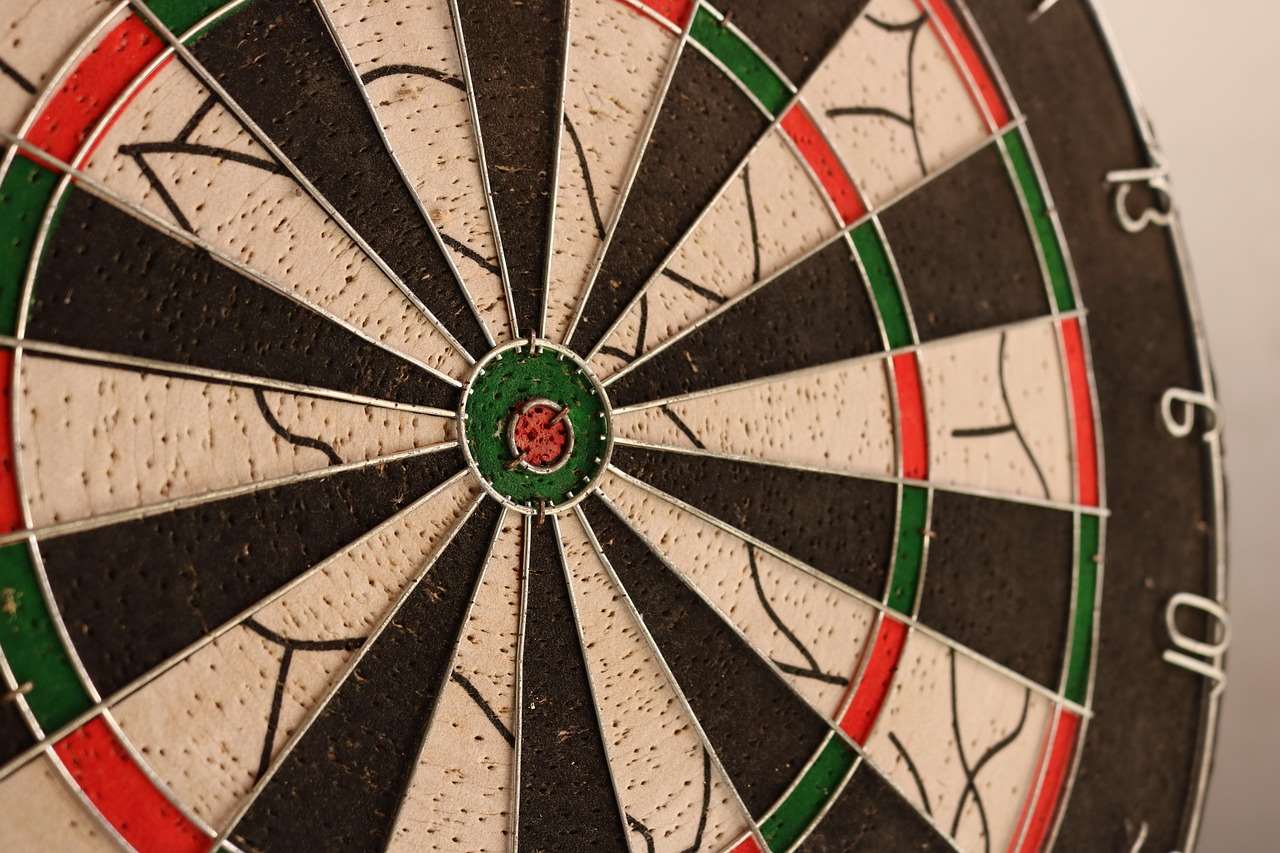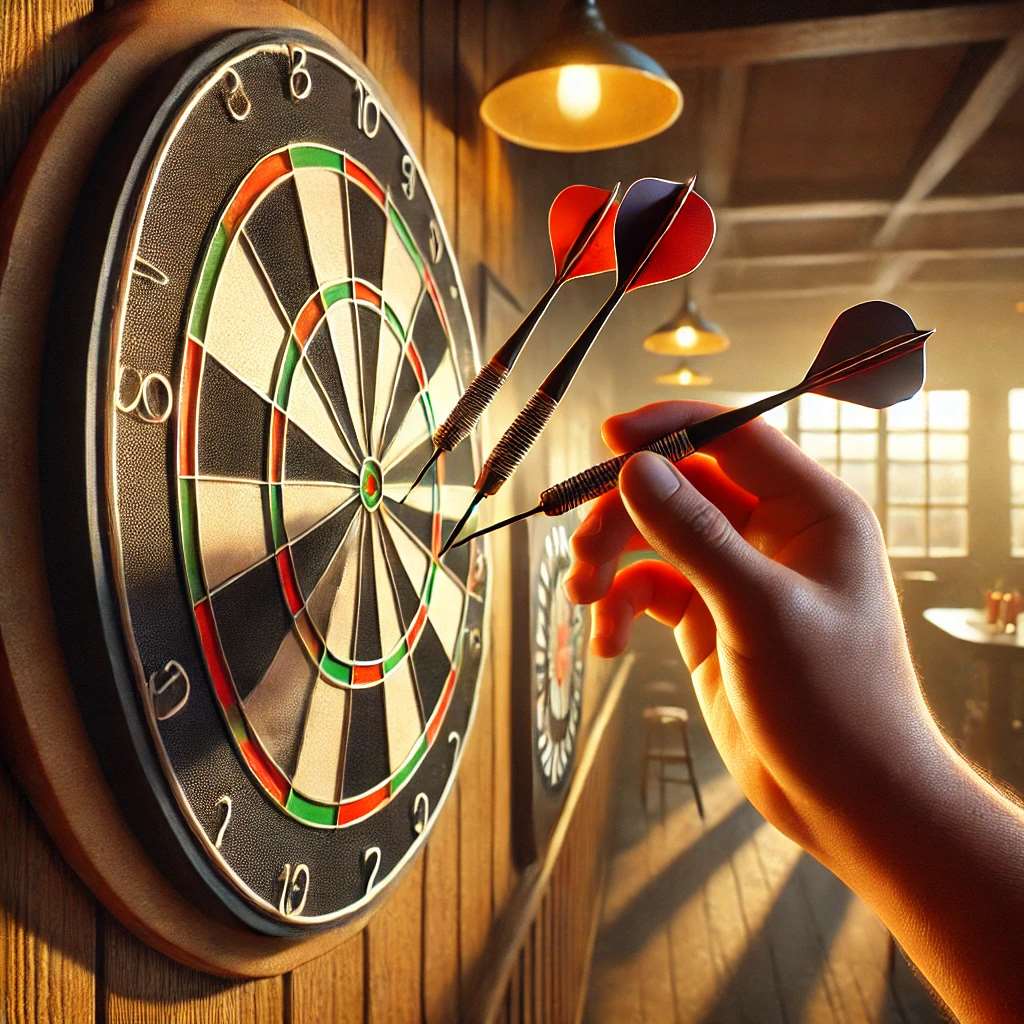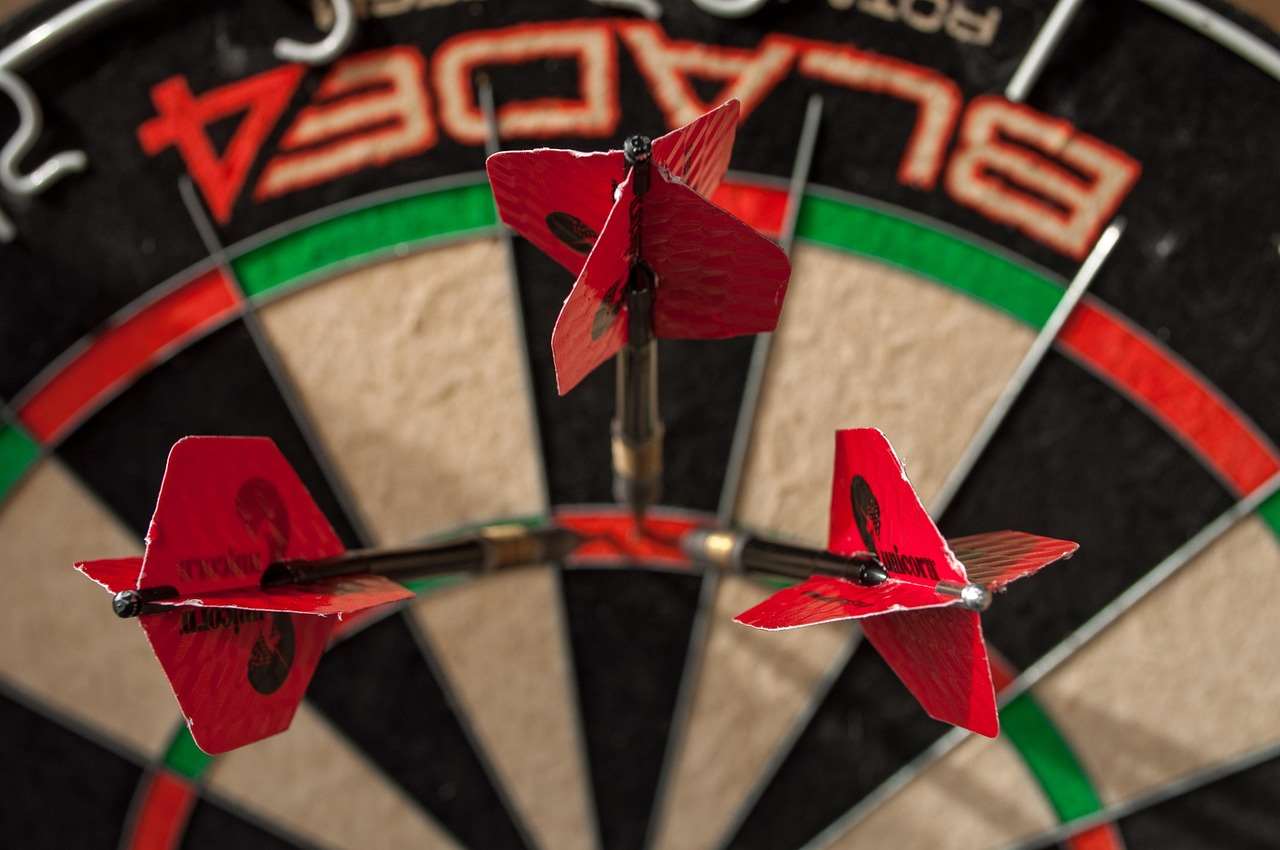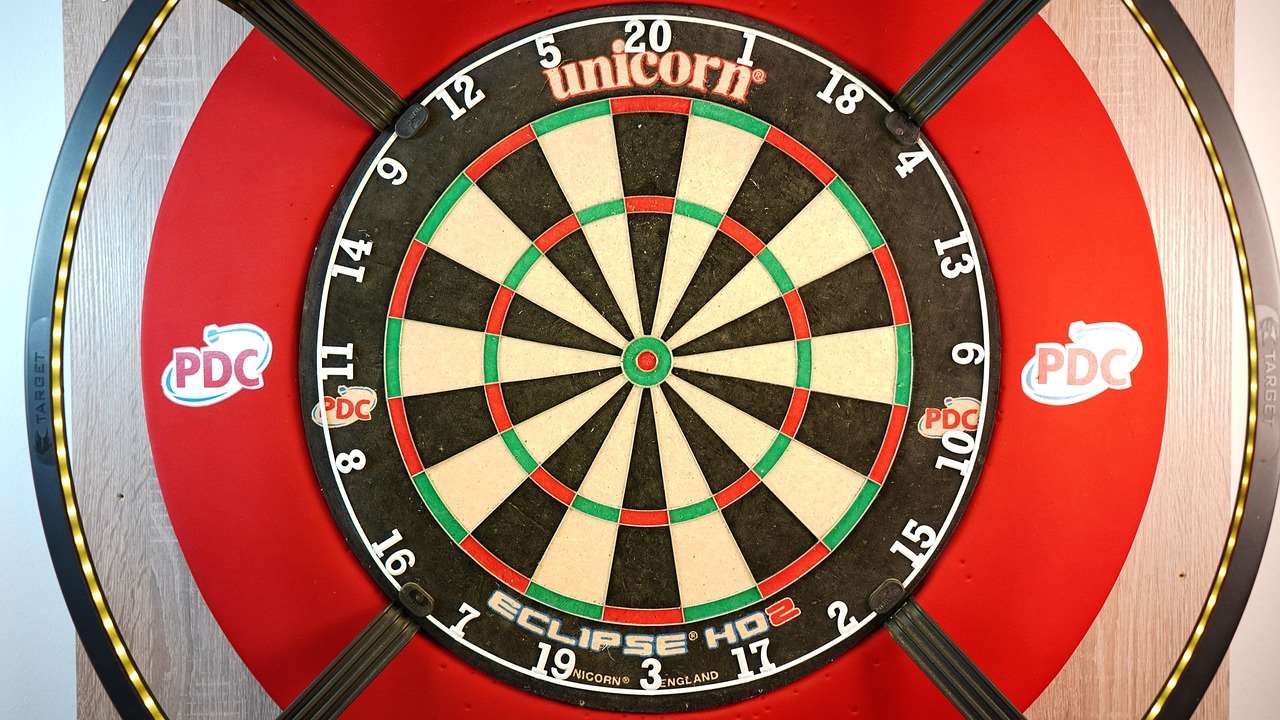The secret to consistent darts scoring lies in a smooth and controlled release; mastering darts release tips will drastically improve your accuracy. This article will cover techniques for achieving a consistent release, common mistakes to avoid, and drills to perfect your throwing motion.
⚠️ Still Using Pen & Paper (or a Chalkboard)?! ⚠️
Step into the future! The Dart Counter App handles all the scoring, suggests checkouts, and tracks your stats automatically. It's easier than you think!
Try the Smart Dart Counter App FREE!Ready for an upgrade? Click above!
Perfecting Your Grip for a Consistent Darts Release
The grip is fundamental to achieving a consistent and accurate release. Experimentation is key to finding a grip that feels natural and comfortable for you. However, there are some general principles to keep in mind. Your grip should be firm enough to maintain control of the dart but relaxed enough to avoid tension, which can negatively impact your darts release tips.
Common Grip Styles
- Two-Finger Grip: This grip involves holding the dart primarily with your thumb and index finger, with minimal support from other fingers. It can offer a sensitive feel for the dart but may require more precise execution.
- Three-Finger Grip: The most popular grip style. Using your thumb, index finger, and middle finger to grip the dart provides a balance of control and sensitivity. Experiment with finger placement along the barrel to find your sweet spot.
- Four-Finger Grip: Adding the ring finger to the grip can provide extra stability, especially for players who prefer a heavier dart. However, it can also limit your feel for the dart.
- Five-Finger Grip: This grip is less common, but can be suitable for those needing to compensate for shaking. The grip makes the release more difficult.
Regardless of the number of fingers you use, ensure that your grip is consistent each time you step up to the oche. Minor variations in grip can lead to significant changes in your throw and impact your consistency. Also, consider the darts shaft lengths and how it affects your grip.

Stance and Posture: Setting the Stage for Release
Your stance and posture play a crucial role in aligning your body for a consistent and repeatable throwing motion. A solid stance provides a stable base, while proper posture ensures that your body is balanced and relaxed. This, in turn, promotes a smooth and controlled darts release. Think of it as the setup for the perfect throw. Before attempting a darts 9 dart finish 2023, focus on these fundamental elements.
Finding Your Ideal Stance
- Angle: Experiment with different angles to the oche. Most players find that a slight angle (around 45 degrees) is comfortable and allows for good alignment.
- Foot Placement: Your front foot should be firmly planted, providing a stable base. The back foot can be positioned slightly behind for balance.
- Weight Distribution: Distribute your weight evenly between both feet. Avoid leaning too far forward or backward, as this can throw off your balance and affect your release.
Maintaining Good Posture
- Straight Back: Keep your back straight and avoid slouching. This promotes good alignment and prevents strain.
- Relaxed Shoulders: Keep your shoulders relaxed and avoid shrugging them. Tension in the shoulders can restrict your throwing motion.
- Head Position: Keep your head still and focused on the target. Avoid tilting or swaying your head during the throw.
Practicing your stance and posture regularly will help you develop muscle memory and ensure that you are consistently setting yourself up for a successful darts release tips and motion. Be mindful of your body position each time you practice and make adjustments as needed. A proper darts game setup includes a comfortable and stable stance.
The Throwing Motion: From Backswing to Release
The throwing motion is the heart of your dart game. A smooth, controlled, and repeatable motion is essential for achieving accuracy and consistency. The motion can be broken down into several phases: the backswing, the forward swing, and the release. Understanding and mastering each phase will significantly improve your game, which includes implementing these crucial darts release tips.
Backswing Control
The backswing is crucial for building momentum and setting the stage for the forward swing. It should be smooth and controlled, avoiding any jerky or abrupt movements. A controlled backswing helps to maintain accuracy. Here are some key points:
- Elbow Position: Keep your elbow relatively stationary throughout the backswing. Avoid dropping or lifting your elbow, as this can disrupt your throwing plane.
- Wrist Action: Use a gentle wrist action to draw the dart back. Avoid over-extending the wrist, as this can lead to inconsistency.
- Eye Contact: Maintain eye contact with the target throughout the backswing. This helps to maintain focus and alignment.
Forward Swing and Acceleration
The forward swing is where you generate power and accelerate the dart towards the target. This phase should be smooth and fluid, with a gradual increase in speed. Some important aspects include:
- Elbow Drive: Drive your elbow forward in a straight line towards the target. This provides the power and direction for your throw.
- Wrist Snap: Use a controlled wrist snap to impart spin on the dart. The wrist snap should be timed to coincide with the release.
- Follow Through: Follow through with your arm and hand after the release. This ensures that you are fully committing to the throw and helps to maintain accuracy.

Timing and Coordination
The key to a successful throw is timing and coordination. All the elements of the throwing motion – the backswing, the forward swing, and the release – must be synchronized to achieve optimal results. Practice is essential for developing the necessary muscle memory and coordination.
Critical Darts Release Tips for a Consistent Throw
Achieving a consistent release is paramount for accuracy in darts. It’s the culmination of all the previous steps – the grip, the stance, and the throwing motion. A clean and repeatable release ensures that the dart leaves your hand at the correct angle and with the correct amount of force. The following darts release tips will help you refine this crucial aspect of your game.
The Importance of a Clean Release
A clean release means that the dart leaves your hand smoothly and without any interference. Any hesitation, jerking, or fumbling at the point of release can significantly impact the dart’s trajectory. To achieve this:
- Follow Through: As mentioned earlier, a proper follow-through is essential for a clean release. It ensures that you are fully extending your arm and hand and that the dart is released smoothly.
- Finger Contact: Minimize finger contact with the dart after the release. The less your fingers interfere with the dart’s flight, the cleaner the release will be.
- Mental Focus: Maintain focus on the target right up to the point of release. Avoid anticipating the outcome or thinking about anything else that might distract you.
Release Point Awareness
Experiment with your release point to find what works best for you. The goal is to release the dart at the same point in your throwing motion every time. Some players prefer to release the dart slightly earlier, while others prefer to release it slightly later. Here’s how to find it:
- Video Analysis: Record yourself throwing darts and analyze the video to identify your release point. Look for the moment when the dart leaves your hand and pay attention to your arm and hand position.
- Practice Drills: Practice releasing the dart at different points in your throwing motion and see how it affects your accuracy. Pay attention to how the dart feels as it leaves your hand.

Adjusting for Different Dart Weights and Styles
Keep in mind that the ideal release point may vary depending on the weight and style of your darts. Heavier darts may require a slightly later release point, while lighter darts may require a slightly earlier release point. Experiment with different darts to find what works best for you. Many players utilize App to score darts to help track their averages with different dart setups.
Common Mistakes to Avoid During the Release
Even with proper technique, it’s easy to fall into common pitfalls that can negatively impact your release and accuracy. Recognizing and correcting these mistakes is crucial for improving your game and truly benefiting from understanding darts release tips.
Tension and Grip Pressure
One of the most common mistakes is gripping the dart too tightly or tensing up during the throw. This can restrict your throwing motion and lead to a jerky or inconsistent release. Remember:
- Relaxation: Focus on relaxing your grip and your arm muscles. A relaxed throw is a smoother and more accurate throw.
- Breathing: Take a deep breath before you throw and exhale slowly during the throw. This can help to reduce tension and improve focus.
Jerky Movements and Rushing the Throw
Another common mistake is rushing the throw or making jerky movements. This can disrupt your timing and coordination and lead to an inaccurate release. To avoid this:
- Smooth Motion: Focus on maintaining a smooth and fluid throwing motion. Avoid any sudden or jerky movements.
- Patience: Take your time and don’t rush the throw. Focus on executing each phase of the throwing motion correctly.

Inconsistent Follow-Through
An inconsistent follow-through is another common mistake that can negatively impact your release. This can lead to a sloppy and inaccurate release. Focus on:
- Full Extension: Ensure that you are fully extending your arm and hand during the follow-through.
- Target Focus: Keep your eyes focused on the target throughout the follow-through.
Drills to Improve Your Darts Release
Practice is essential for mastering the art of darts and honing your darts release tips. The following drills can help you improve your release and develop consistency.
Target Practice with Focus on Release
The simplest and most effective drill is to simply practice throwing darts at the target, focusing specifically on your release. Pay attention to how the dart feels as it leaves your hand and make adjustments as needed. Aim for specific segments to increase precision.
The “No Look” Drill
This drill involves throwing darts without looking at the target during the release. This forces you to rely on your muscle memory and helps to improve your feel for the dart. After your pre-throw routine and aiming, close your eyes just before the release. It highlights any inconsistencies.
Video Analysis and Adjustment
Record yourself throwing darts and analyze the video to identify any areas for improvement. Pay particular attention to your release point, your follow-through, and any tension or jerky movements. Use DartConnect to track stats and progress.

Maintaining Consistency Over Time
Achieving a consistent release is an ongoing process. It requires dedication, practice, and a willingness to adapt and refine your technique. The application of these darts release tips is crucial.
Regular Practice and Evaluation
Make sure that you are practicing regularly and consistently evaluating your technique. Pay attention to how your release feels and make adjustments as needed. Don’t be afraid to experiment with different grips, stances, and throwing motions to find what works best for you. Be sure to understand the darts line how far to ensure proper setup.
Dealing with Slumps
Everyone experiences slumps from time to time. The key is to not get discouraged and to continue practicing and working on your technique. Go back to basics and focus on the fundamentals of your grip, stance, and throwing motion. A slump is a good time to re-evaluate your darts release tips and make necessary adjustments.
Conclusion: Mastering Your Darts Release for Enhanced Performance
Mastering your darts release is a journey that demands patience, practice, and a keen eye for detail. By focusing on your grip, stance, throwing motion, and by avoiding common mistakes, you can achieve a consistent and accurate release that will elevate your game. Remember, the key to consistent scoring lies in a smooth, controlled, and repeatable release. So, implement the darts release tips discussed, dedicate yourself to regular practice, and watch your darts game soar to new heights. Start improving your game today!
Hi, I’m Dieter, and I created Dartcounter (Dartcounterapp.com). My motivation wasn’t being a darts expert – quite the opposite! When I first started playing, I loved the game but found keeping accurate scores and tracking stats difficult and distracting.
I figured I couldn’t be the only one struggling with this. So, I decided to build a solution: an easy-to-use application that everyone, no matter their experience level, could use to manage scoring effortlessly.
My goal for Dartcounter was simple: let the app handle the numbers – the scoring, the averages, the stats, even checkout suggestions – so players could focus purely on their throw and enjoying the game. It began as a way to solve my own beginner’s problem, and I’m thrilled it has grown into a helpful tool for the wider darts community.